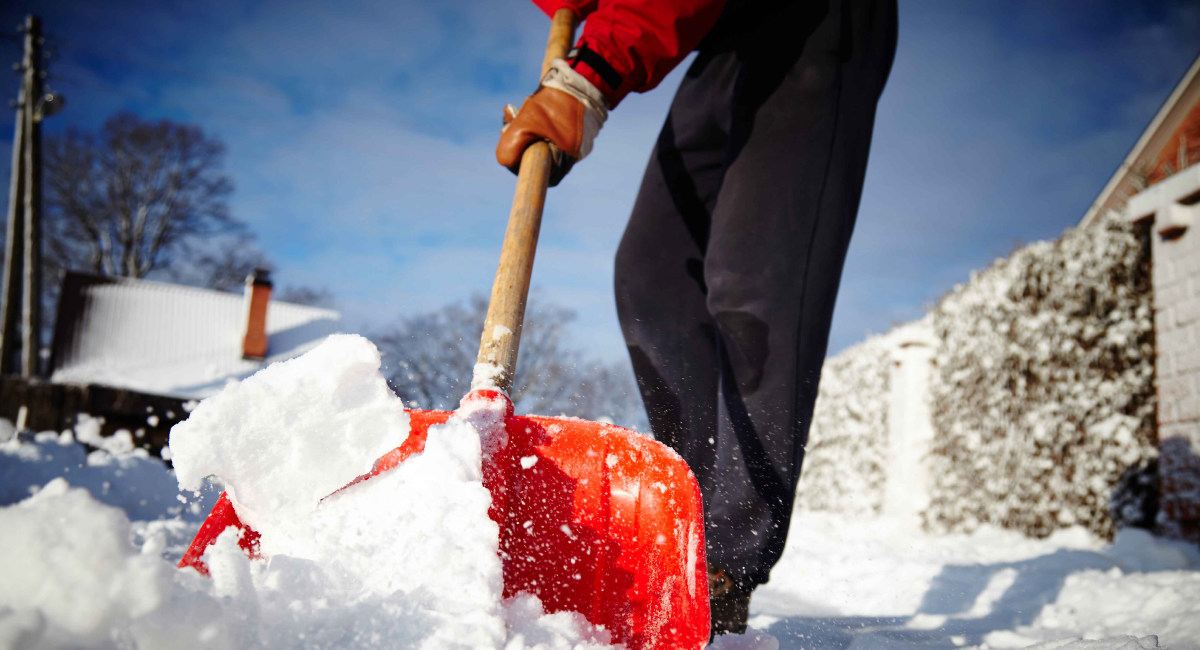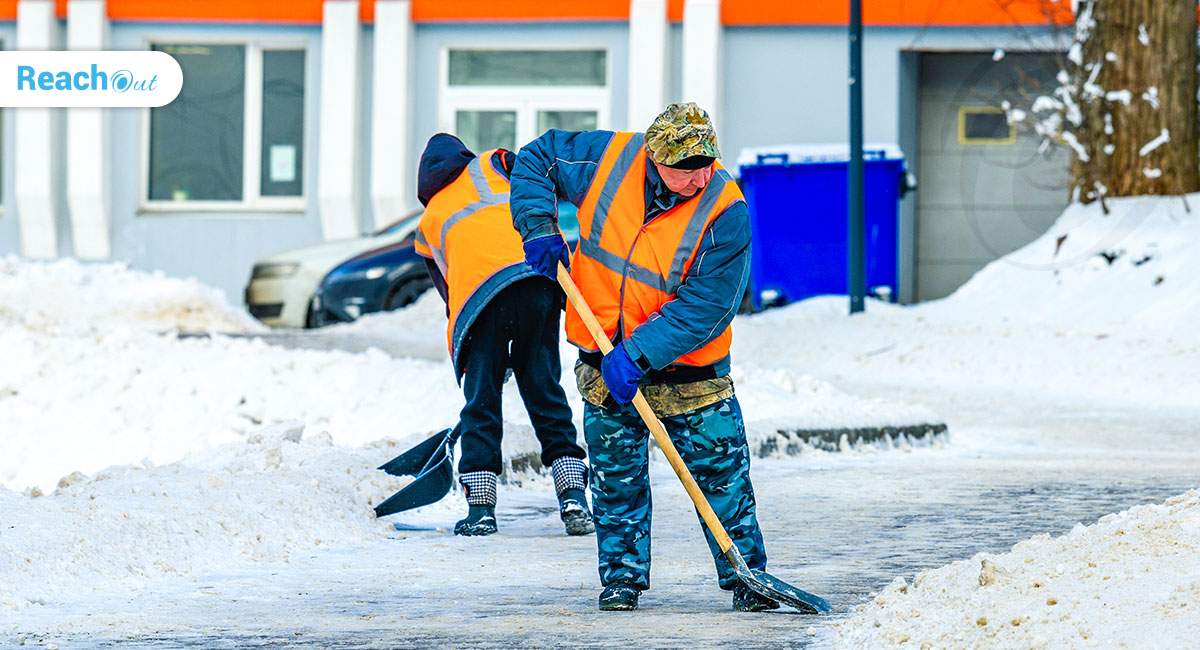
How Field Workers Can Stay Safe While Shoveling Snow
With winter around the corner, it is time to brace up for snow shoveling. Snow left unshoveled melt and refreeze, forming ice and posing a slipping hazard. Snow shoveling comes with its share of hazards as well. The activity may cause back injuries and heart attacks. Shoveling involves physical exertion in cold temperatures, increasing the workload on the heart. Heart attacks account for about 7% of all shoveling related injuries. But the most common injury is back spasms. The exertion cause strain on body muscles, causing back injuries.
Here are some safety tips for field service staff engaged in snow shoveling.
1. Take Basic Precautions
Snow means cold. Field workers who remove snow need to dress in layers to stay warm. Remove layers as the body heats up, to maintain constant body temperature.
Before shoveling, warm the muscles through some light movements such as bending side to side or walking or stretching muscles which will reduce the risk of injury.
Take frequent breaks. Shoveling for an extended period can cause sprains and aches. A break after 20 to 30 minutes of shoveling is optimal. The workers also need to stay hydrated by drinking plenty of water.
2. Adopt the Correct Posture and Work Method
Adopting the correct posture makes shoveling easy, and reduces the risk of injury. Here are some tips:
- Bend the knees and lift with the legs.
- Push the snow with the shovel rather than lifting it, to reduce strain on the body.
- The shovel blade should be kept close enough to the body when lifting the snow up. This can reduce strain to the back muscles.
- Exchange shoveling between right-hand and left-hand alternatively to prevent strain on any one muscle.
- Change the grip on the hand holding the bar. Alternate between palm under and palm over.
Related Reading: 5 Smart Ways to Gain New Customers
3. Shovel Smart
Pre-treat walkways and other paved surfaces with anti-icing products, to make shoveling easier. Before starting to shovel, use a roof rake to remove snow from roof areas.
The snow shoveling blad needs to be waxed well to prevent snow from sticking to it. You can use candle wax, floor wax, car wax, or even cooking spray to serve the purpose.
When there is a thick layer of snow, skim about six inches off at a time. Lifting too much snow could cause back and shoulder muscle injury.
Use ergonomic snow shovels. New plastic ergonomic shovels offer a big upgrade over traditional aluminum shovels. These are lightweight and reduce the load. These shovels reduce the quantum of bending required and are striking in appearance also.
When the storm extends over a considerable time, shovel periodically throughout the storm. This will avoid the need to move large amounts of snow in one go. In any case, shovel soon after the snowfall. Fresh snow is lighter, fluffier, and easier to shovel. When the snow stays longer on the ground, it becomes wetter and heavier.
4. Special Tips to Shovel Driveways
Give priority to driveways, allowing vehicles to move without interruptions. The inability to service a client on time, or cater to emergencies will leave a poor impression on customers.
When shoveling driveways, clear a path to the driver’s door of the car first. Afterward, start the car and turn on the defrosting buttons at the front and rear of the car. The car heat should be on in full-blast so that it will warm-up while you’re snow shoveling.
Shoveling a path to the vehicle avoids trampling down snow on the way. Trampled snow is harder to remove, compared to unpacked snow and it will increase the risk of people slipping and falling down.
Defrosting the car gives a warm space immediately after shoveling, reducing strain. Defrosting windows make it easier to clean the snow and ice off them.
Hold off shoveling the place where the driveway meets the street, until the last minute. Plows that pass by will barricade the area with more snow.
Related Reading: How to Motivate your Contractors and Temp staff
5. Other Key Considerations
Brush the snow off the shrub branches first, to prevent it from snapping under the impact of the shovel.
Chose the area to pile up the snow. Avoid areas near doors, driveway or pathways. Heave the shovel a decent distance away from these areas, to prevent seepage and having to repeat the work. Heaving some shovel-fulls against a fence or a standing surface acts as a windbreak, to protect the fence from wind-damage.
Give priority to shovel areas around dryer vents. A dryer vent with snow around it is a safety hazard. Clogged vents block fumes, putting inhabitants at the risk of carbon monoxide poisoning. They also overheat, causing fires. Be prompt to remove snow from the area where the exhaust comes, to prevent clogging. Even when the snowfall is not deep, winds may cause snow drifts to accumulate. After shoveling, make sure all exhaust systems around the premises vent. Keep the fire hydrant near the property clear of snow as well.
Remove snow from the drains. Ignoring the drain could result in a thick glacier of ice and snow having formed over the drain, over time. When the snow finally melts, the runoff could pose problems of its own. Finally, check the local codes and ordinances on snow and ice removal requirements.
Snow and ice pose potential risks to the self and others. People have a responsibility to keep walking areas in and around their premises clear of snow and ice. By following the above tips, field service staff engaged in snow removal can reduce injuries while shoveling, and prevent slipping on the snow! ReachOut’s Field Service Management Software supports companies in the snow removal business to effectively track work orders and manage the service personnel involved in snow shoveling.
Winter is here! Contact us to know how ReachOut can add value to your snow removal business and ensure the safety of your field service technicians.
Aarathy
With over a decade of experience in the technology sector, Aarathy is passionate about improving field service efficiency through digital innovation. She is particularly interested in topics such as field service trends, service automation, and strategies for implementing digital transformation in service management.
More posts by Aarathy


